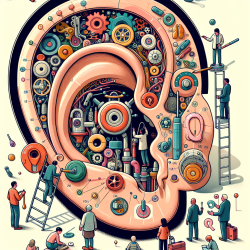Introduction
As practitioners in the field of speech-language pathology, we strive to provide the best possible outcomes for our clients. This often involves staying informed about the latest research and integrating evidence-based practices into our therapeutic approaches. A recent study titled "Use of complementary and alternative medicine by those with a chronic disease and the general population - results of a national population-based survey" offers valuable insights that can be leveraged to enhance our practice, particularly when working with children who may have chronic conditions.
Understanding the Research
The study, conducted using data from the Canadian Community Health Survey (CCHS), examined the prevalence and predictors of complementary and alternative medicine (CAM) use among Canadians. It highlighted that approximately 12.4% of the general population consulted a CAM practitioner in the past year, with higher rates observed among individuals with asthma and migraines. Conversely, those with diabetes were less likely to use CAM services. The findings underscore the importance of understanding the diverse health management strategies employed by our clients, including CAM, which can complement traditional therapeutic approaches.
Implications for Speech-Language Pathologists
For speech-language pathologists, particularly those providing online therapy services through platforms like TinyEYE, integrating insights from this research can enhance client outcomes. Here are several ways to apply these findings:
- Holistic Assessment: Incorporate questions about CAM use into your client assessments. Understanding whether clients or their families are utilizing CAM can provide a more comprehensive view of their health management strategies.
- Interdisciplinary Collaboration: Foster collaboration with CAM practitioners when appropriate. This can lead to a more integrated approach to care, ensuring that all aspects of a child's health are addressed.
- Education and Communication: Educate families about the potential benefits and risks of CAM, particularly in conjunction with traditional therapies. Open communication can help ensure that all parties are informed and aligned in their approach to care.
Encouraging Further Research
While the study provides valuable insights, it also highlights areas where further research is needed. For instance, understanding the specific types of CAM used by individuals with different chronic conditions can inform more tailored therapeutic approaches. Additionally, exploring the impact of CAM on speech-language outcomes could provide evidence for integrating these practices more formally into therapeutic protocols.
Conclusion
As speech-language pathologists, our commitment to data-driven, evidence-based practice is paramount. By considering the findings of this study and exploring the role of CAM in our clients' lives, we can enhance the effectiveness of our interventions and support the overall well-being of the children we serve. To read the original research paper, please follow this link: Use of complementary and alternative medicine by those with a chronic disease and the general population - results of a national population-based survey.










